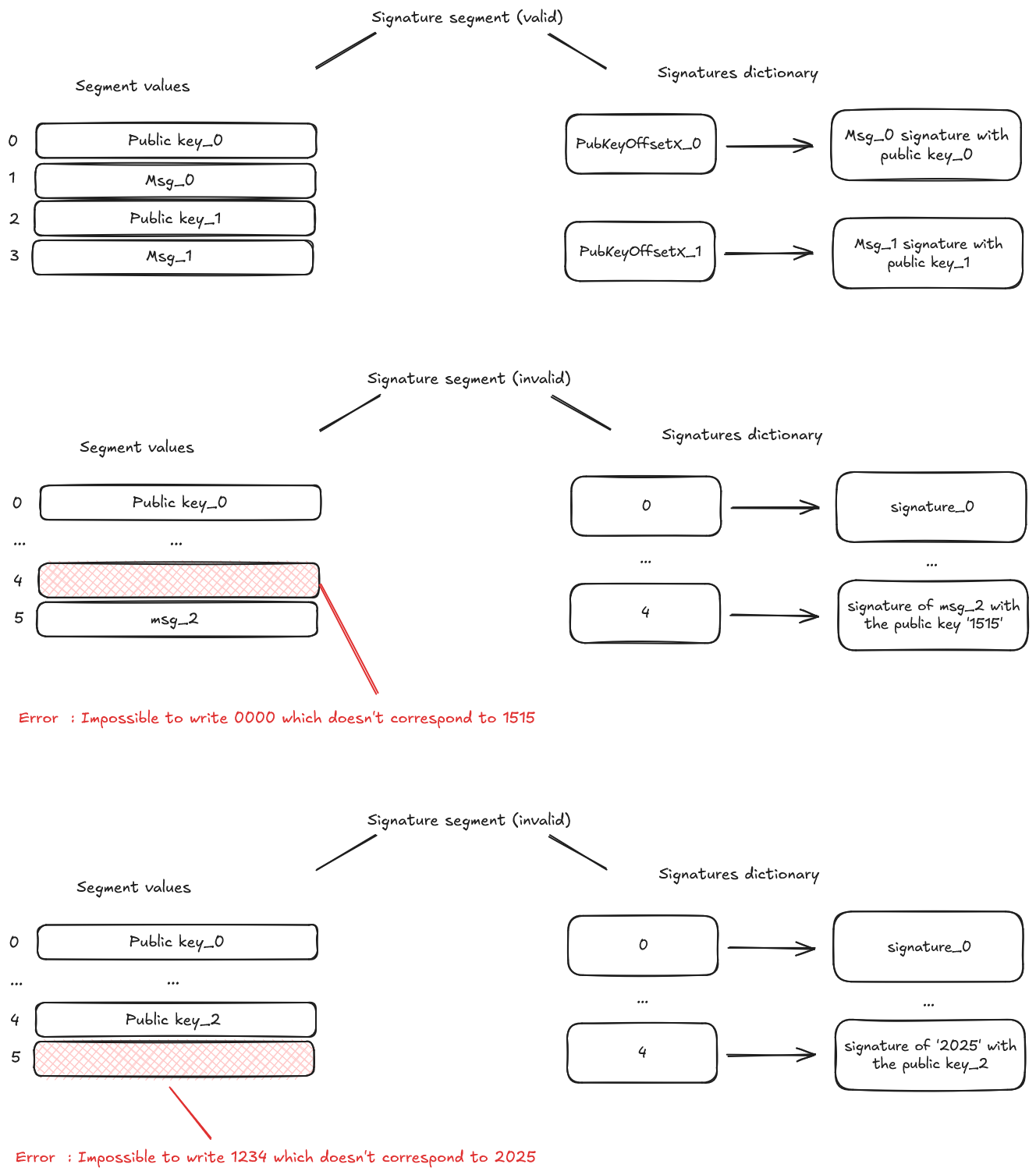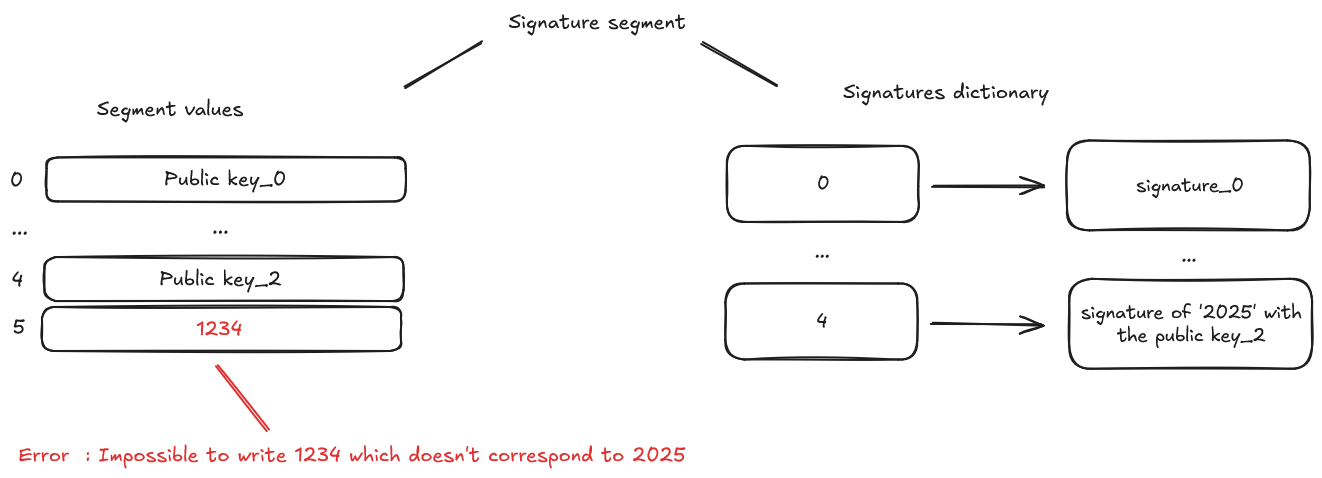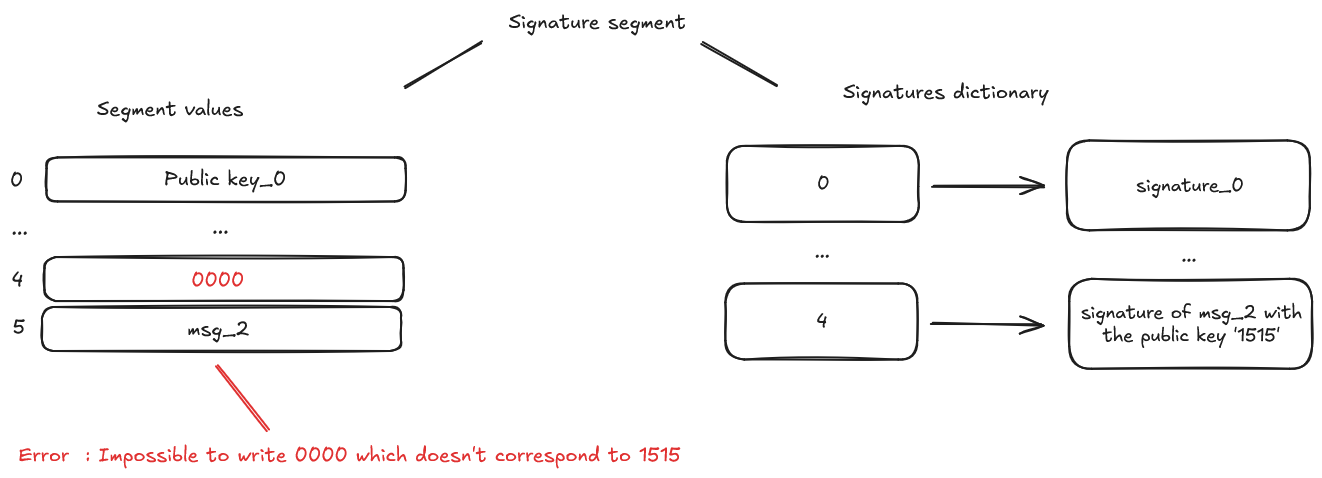ECDSA Builtin
The ECDSA (Elliptic Curve Digital Signature Algorithm) builtin verifies cryptographic signatures on the STARK curve. This builtin is primarily used to validate that a message hash was signed by the holder of a specific private key.
Memory Organization
The ECDSA builtin has a unique memory structure with two interconnected components:
- Memory Segment: A dedicated segment that stores public keys and message hashes as field elements
- Signature Dictionary: A mapping that associates public key offsets with their corresponding signatures
Cell Layout in the Memory Segment
The ECDSA segment arranges cells in pairs:
- Even offsets (0, 2, 4, ...) store public keys
- Odd offsets (1, 3, 5, ...) store message hashes
Each public key at offset 2n is associated with a message hash at offset 2n+1. For example, public key at offset 0 pairs with the hash at offset 1.
Signature Verification Process
Before using the ECDSA builtin, signatures must be explicitly registered in the signature dictionary. The VM performs signature verification when the program writes values to the ECDSA segment:
- When a public key is written at offset
2n, the VM checks if it matches the key used to create the signature registered at that offset - When a message hash is written at offset
2n+1, the VM verifies that it matches the hash that was signed
If either check fails, the VM throws an error immediately - this is different from some other builtins that defer validation until output access.
Valid Usage Example

In this example:
- Public key_0 at offset 0 and hash_0 at offset 1 are verified against the signature stored at dictionary key 0
- Public key_1 at offset 2 and hash_1 at offset 3 are verified against the signature stored at dictionary key 2
- All verifications pass because the public keys and hashes match what was originally signed
Error Conditions
Invalid Hash Error

When a program writes hash "1324" at offset 5, but the signature at dictionary key 4 was created for hash "2025", the VM throws an error because the hash doesn't match what was originally signed with that public key.
Invalid Public Key Error

When a program writes public key "0000" at offset 4, but the signature at dictionary key 4 was created using public key "1515", the VM throws an error because the public key doesn't match the one used to create the signature.
Implementation References
These implementation references of the ecdsa builtin might not be exhaustive.
- TypeScript Signature Builtin
- Python Signature Builtin
- Rust Signature Builtin
- Go Signature Builtin
- Zig Signature Builtin
Resources on ECDSA signature
If you're interested about the ecdsa signature and its use, take a look at those references:
- StarkNet, STARK curve
- Svetlin Nakov, ECDSA: Elliptic Curve Signatures, 2020